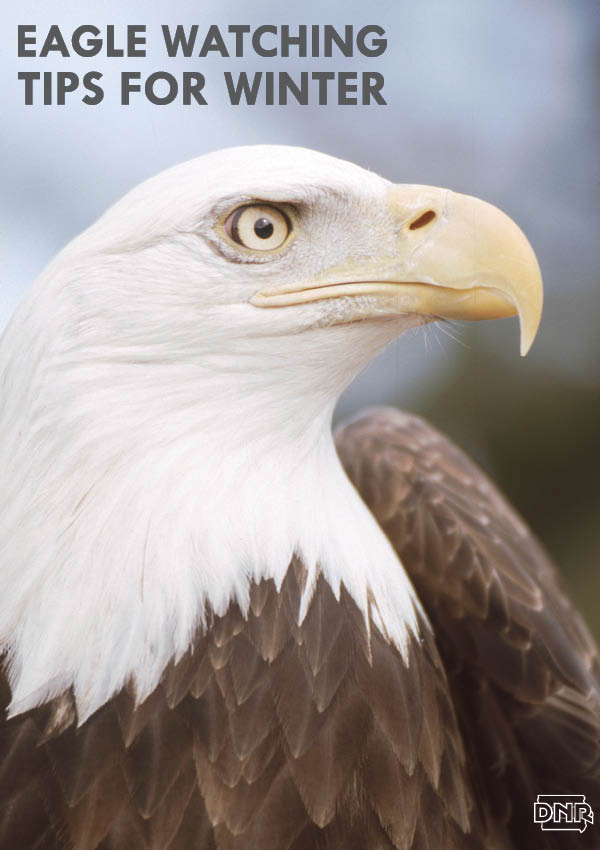 Winter is the best time in Iowa to spot a majestic bald eagle soaring overhead or swooping down to the water to catch a fish. If you’re looking to take in this incredible sight, check out our eagle-spotting tips, and join us for a hawk watch event:
Winter is the best time in Iowa to spot a majestic bald eagle soaring overhead or swooping down to the water to catch a fish. If you’re looking to take in this incredible sight, check out our eagle-spotting tips, and join us for a hawk watch event:
Head to the river.
During the winter, numerous eagles from northern states and Canada migrate south to find food. The birds begin arriving in Iowa during September and become more numerous through January.
The highest concentration of eagles in the Midwest is along the Mississippi River. Each year 4,000 to 7,000 bald eagles winter along the Mississippi River, stretching from Minneapolis to 50 miles south of St. Louis.
The river is a popular wintering area because of abundant food and open water, particularly at locks and dams and power plants that keep the river from freezing. This provides the eagles with an area to hunt their primary food source—fish.
Look to the sky.
In addition to food, bald eagles need places to roost during the night and perch during the day. Bald eagles generally roost together in large mature trees surrounded by a buffer of smaller trees.
Roosts are chosen by the eagles to provide protection from the weather and avoid disturbances. Roosts are also generally close to a source of food. Daytime perches are usually within 60 yards of the water’s edge.
For a species that is so dependent on large trees for nesting, roosting, and hunting perch sites, perhaps the greatest threat facing its existence today is the continued destruction of woodland habitat along our rivers.
Keep your distance.
During the winter, bald eagles are under pressure to consume enough food and expend as little energy as possible in order to maintain body heat. If anglers, birdwatchers or boaters, for example, get too close to the eagles, the birds will waste valuable energy flying away. It exposes them to undue stress and could cause them to abandon a site.
To avoid disturbing eagles, do not get any closer than 400 yards from a perched eagle. When possible, stay in your vehicle, use a blind, or stand behind stationary objects when viewing eagles. Stay on the opposite side of the river or lake to allow them a peaceful refuge. Since more than 70 percent of the eagle’s feeding occurs during the early morning, avoid visiting areas that eagles rely on for food before 9 a.m.
Learn more about upcoming hawk watch events and find more info on our Iowa Wildlife and Take It Outside boards on Pinterest.